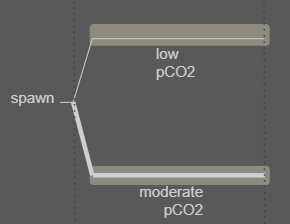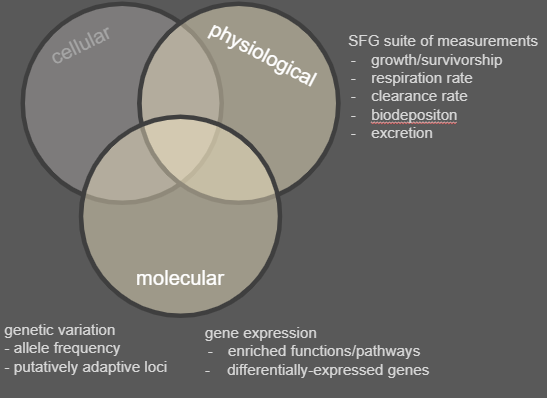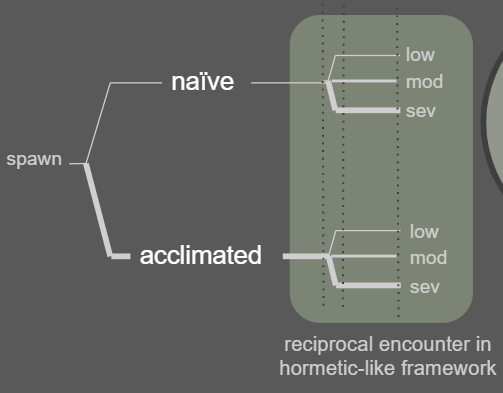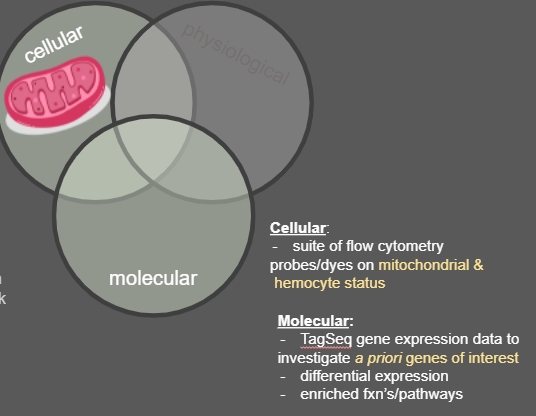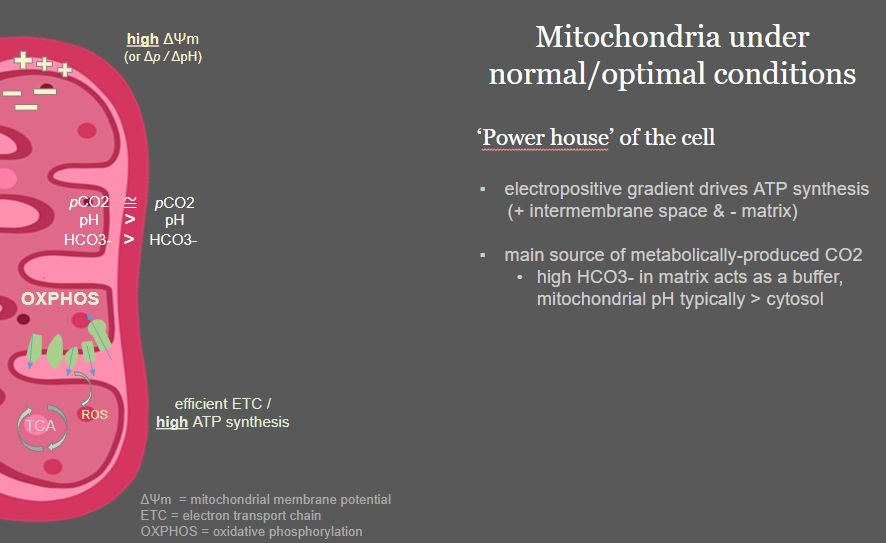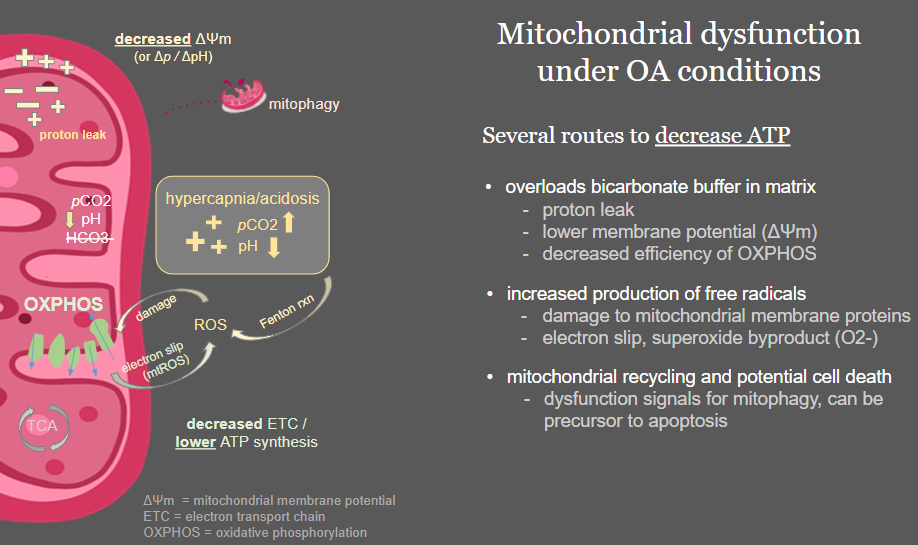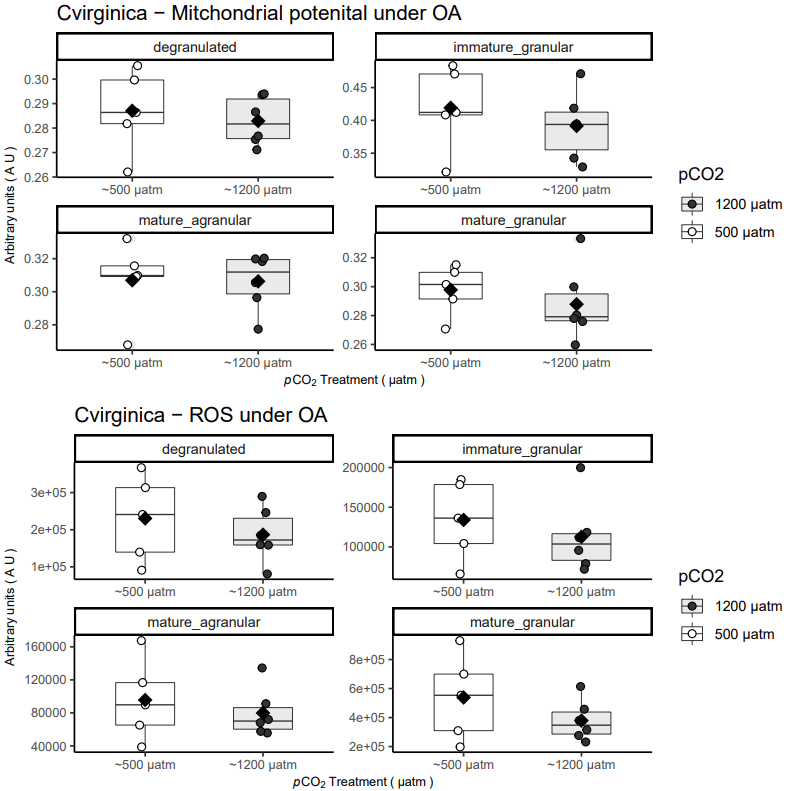About experiment:
Presentation (screenshots of slides below) by S.Gurr here
Link to oyster hemolymph trial run here
In our ongoing study..
- We currently are rearing scallops (A. irradians) for a long-term OA study, propagating cohorts acclimatized under different envrionments
- Periodically, we investigate a suite of physiological responses coupled with sacrificial sampling of whole tissues for their parentage and offspring. The goal here is to explore genomic markers of selection using genome-wide associate studies to determine if any phenotypic variances are the result of a genome-wide variants (SNP cals for example)
- This is our experiment in a nutshell..
I am also curious about..
..putative effects of prolonged exposure during reciprocal environmental challenges - with a particular interest in the mitochondria
-
a reciprocal encounter can reveal cryptic differences between cohorts (general timeline / idea below)
-
Here, we can investigate the cellular mechanisms taking place behind the curtain of the phys phenotype - coupled with -omics investigations (i.e. gene expression patterns/functional differences) this can present a strong story!
What is this story?
- I believe the mitochondria is at the center of these downstream textbook effects of anthropogenic change + general environmental challenges both biotic and abiotic. Mitochondria serve as the powerhouse, providing the majority of ATP for baseline/housekeeping activity, growth, etc.. while also being the major source of ROS and signaling mechanisms in the cell (i.e. retrograde and anterograde signaling between the mitochondria and nucleus) For example, the immunodeficiency cascade is triggered by mitochondrial dysfunction leading to attenuated/intensified metabolite production - activation/inhibition of proteins act as a domino effect for others involved in transcription and protein activation for immune response.
This and a plethora of other mitchondrial-mediated mechanisms have fed my curiosity
-
under OA conditions, a summary of literature findings/hypothesis suggest that external changes of pCO2 in the surrounding environment can change the buffering capacity of the cell. Importantly, the internal environment of the cell is known to have a high pCO2/low pH state under normal conditions - so it is important to note that elevated pCO2 will likely not reveal drastic biochemical changes but even a subtle difference can elicit great effects such as…
-
overloaded/altered bicarbonate buffer in mitochondrial matrix
-
mitochondrial dysfunction (proton leak, increased ROS production, lower ATP production/OXPHOS activity)
-
-
if this is the case, then the cell will need to readily activate/transcribe proteins for mitchonrial recycling (signaling, transport, stress response), apoptosis, alternative mitochondrial pathways, and mito-nuclear communication.
Hemolymph can tell it
In a trial run in March 2022, we completed a OA trial to test hemolymph markers of mitochondrial potential and ROS production (among others yet to be processed!)
Our findings show…
- agranular and granular cells decrease mitochondrial potential under elevated pCO2 conditions initially (first 24 hrs) and differences in mitochondrial potential dissipates with time of exposure (day 8, below). Although a marginal effect (via anova), this response is promising considering the small sample size (N = 6 per treatment)
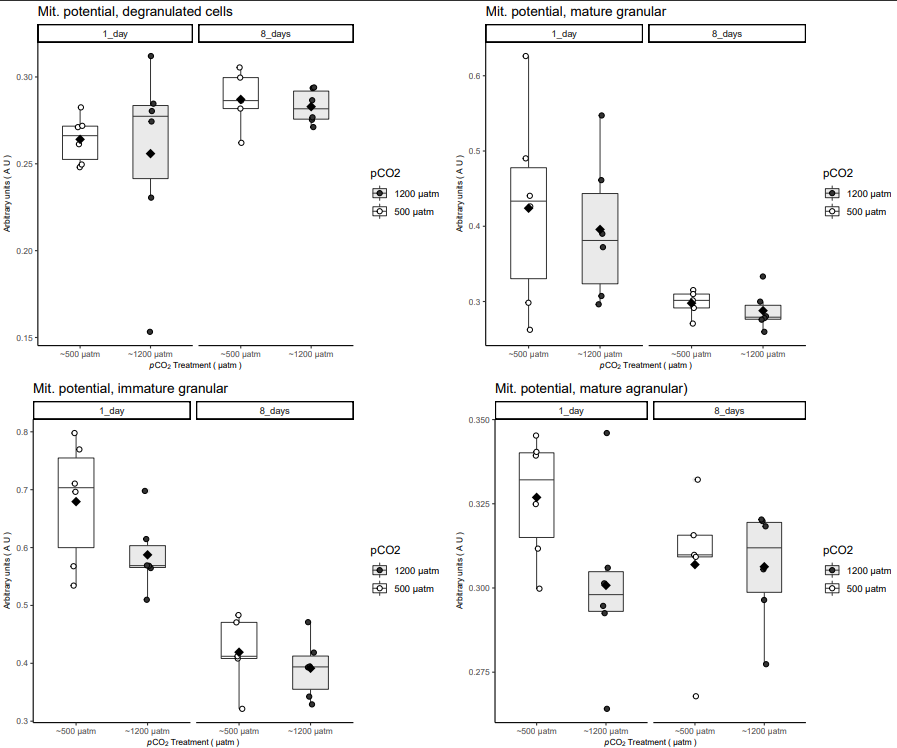
- although no effect via anova, all cell types show lower mean ROS under elevated pCO2 relative to ambient (low pCO2) conditions.
-
contrary to expectations of low membrane potential –> dysfunction –> high ROS, this presents an interesting route moving forward..
-
this data actually suggests low membrane potential –> dysfunction –> low OXPHOS/ATP production (metabolic depression?) –> low ROS. This makes a lot of sense and it a great jump-off point for further exploration!
signing out.

